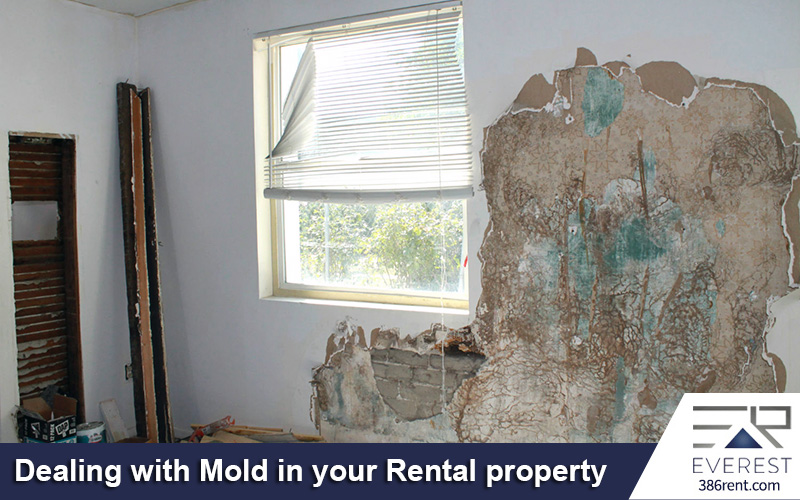Mold is one environmental problem that not only has health hazards but also causes monetary losses for a landlord. They also face lawsuits form affected tenants running into millions of dollars on account of mold. There has been this debate for long whether mold is a responsibility of the tenant or the landlord. Some states require landlords to provide mold free livable units to their tenants. Even if your state does not say anything specifically about mold, you should make sure that your property remains free form mold to prevent any health issues and also legal issues with your tenants.
Mold is a natural phenomenon but it can be problematic when it starts to grow indoors. Mold develops because of moisture and both can damage your rental property while causing health problems for the inmates inside the property. There are different types of mold having different properties.
- Aspergillus is a mold that develops because of moisture in the HVAC. It is allergenic in nature.
- Stachybotrysatra is a black green mold that is sometimes seen inside homes in places laden with moisture
- Sladosporium is another mold that appears like pepper and causes allergies in human beings.
Areas where mold grows commonly
Mold can grow on any surface where it finds moisture. Besides walls, molds can grow on paper, wood, rugs, and even food items. Basements and bathrooms are two areas where molds find ideal environment for their development. It also grows on the roof as well as outside of pipes if there is any leakage.
Potential health problems caused by mold
According to CDC, continued exposure to environments containing mold can cause serious health problems like throat infections, nausea, common cold, cough, stuffed nose, irritation in the eyes, and some lung ailments. People who have allergies tend to develop many health problems when they come in contact with mold.
Mold can be easily prevented inside your rental property by preventing build up of moisture. One big problem with mold is that it can damage the property quickly if it is left untreated. This is why it is extremely necessary to take action for its removal as soon as you identify mold in your rental property. A little mold can be wiped using a metal but you should not remove it with a cloth or bare hands. There are available scrubbers and cleaners to get rid of mold infestations. Make sure you take quick action whenever a tenant makes a request for removal of mold in your property.
You should also educate your tenants on the topic of mold. You should tell them how to spot mold and efforts they should make to keep mold away from their homes.
Ways to avoid mold inside your property
- Make sure that humidity levels in your property never exceed the level of 50%. Dehumidifiers and air-conditioning helps in achieving this goal.
- Ensure sufficient ventilation in your property through installation of exhaust fans. Keep vents of clothes dryers outside the property.
- Repair any pipe leaks as soon as you spot them.
- Avoid build up of moisture by using mold killing products in bathrooms
- Get rid of carpets that have become wet and dry them in the outside.
Remember that the responsibility of preventing mold in your property lies on your shoulders. It is better to monitor its development in your property during routine inspections. You can also request your tenants to report mold as soon as they spot it in their homes. Carry out repairs of broken windows and broken pipes as soon as possible. Make sure you get mold inspection done in your property once every year.



 As a top producing Realtor and Property Manager; Terry specializes in sales, extensive construction homes, rentals, REO’s, short sales, and all aspects of Real Estate. After graduating the University of Michigan with a master in MBA, Terry continued his endeavor and now has over 15+ years of experience in the Real Estate world. If there is anything that has to do with Real Estate and sales, you can always be sure of Terry to provide important, specialized knowledge.
As a top producing Realtor and Property Manager; Terry specializes in sales, extensive construction homes, rentals, REO’s, short sales, and all aspects of Real Estate. After graduating the University of Michigan with a master in MBA, Terry continued his endeavor and now has over 15+ years of experience in the Real Estate world. If there is anything that has to do with Real Estate and sales, you can always be sure of Terry to provide important, specialized knowledge.




